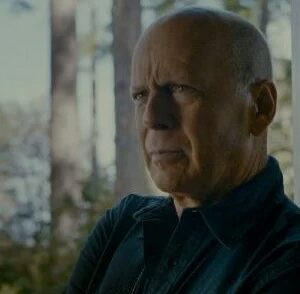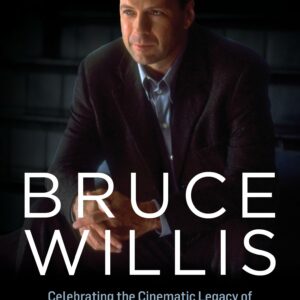Dakota Johnson, known for her nuanced and multi-dimensional performances, has carved out a distinctive space in Hollywood. Her versatility as an actress, combined with her ability to convey emotional complexity, makes her films memorable, and a significant part of that memorability lies in an often-overlooked element: the music. Soundtracks are the invisible thread that ties scenes together, amplifying emotions and adding depth to the narrative. In Dakota Johnson’s filmography, music plays a pivotal role in shaping the audience’s emotional journey, weaving together subtle undercurrents of vulnerability, passion, and tension. This article will delve into how soundtracks in Johnson’s films elevate her performances and create lasting emotional resonance.
Setting the Mood with Soundtracks
A well-chosen soundtrack has the power to transform a scene from ordinary to extraordinary. In Dakota Johnson’s films, music often serves as a key tool to set the mood, enhancing the atmosphere and underscoring the emotional stakes of a given moment. Take, for instance, Fifty Shades of Grey—a film where music plays an essential role in heightening the tension between Johnson’s character, Anastasia Steele, and Christian Grey. The sultry tones of tracks like “Love Me Like You Do” by Ellie Goulding or “Earned It” by The Weeknd add layers of intensity to the film’s romantic and erotic sequences, guiding the audience’s emotional response.
The music here does more than just play in the background—it becomes an active participant in the storytelling. As Anastasia and Christian’s relationship becomes more complicated, the soundtrack mirrors their evolving emotional landscape. Music crescendos at moments of vulnerability and longing, creating a soundscape that pulls viewers deeper into the film’s tension-filled narrative. Johnson’s delicate portrayal of Anastasia, combined with these musical cues, transforms what could have been a typical romantic drama into an emotionally charged experience.
Amplifying Emotional Impact
Certain scenes in Dakota Johnson’s films rely heavily on music to fully express the emotional depth of her characters. Whether it’s a moment of quiet vulnerability or a surge of resilience, the soundtrack amplifies these pivotal scenes, allowing the audience to connect more intimately with the characters’ inner worlds.
One such example can be found in A Bigger Splash, a film that uses its eclectic soundtrack to draw out the contrasting emotions of its characters. Johnson plays Penelope, a seemingly carefree young woman who harbors more complexity than meets the eye. The film uses music strategically to highlight the brewing tension between characters. When Penelope’s playful facade begins to crumble, the music shifts, reflecting the emotional turbulence just beneath the surface.
Another notable example comes from The High Note, where Johnson portrays an ambitious personal assistant to a legendary singer. The music in this film not only emphasizes Johnson’s character’s drive and determination but also her moments of self-doubt. Songs from artists like Tracee Ellis Ross, who plays the singer, mirror Johnson’s journey from self-assuredness to vulnerability, allowing the audience to experience her character’s highs and lows through both performance and music.
In these films, the emotional weight of Dakota Johnson’s characters is tied directly to the music that accompanies their most defining moments. Whether the mood calls for melancholic reflection or unrestrained passion, the soundtrack helps unlock the full emotional spectrum of her characters, drawing the audience closer to their internal conflicts.
Music as a Narrative Tool
Music in Dakota Johnson’s films doesn’t merely act as an emotional enhancer; it also serves as a critical narrative tool. Soundtracks can reflect a character’s internal struggle, symbolize key thematic elements, or even foreshadow upcoming events. Through music, filmmakers can subtly move the plot forward without the need for explicit dialogue or exposition.
In Suspiria, a psychological horror film directed by Luca Guadagnino, Johnson plays Susie Bannion, a dancer who becomes embroiled in a supernatural mystery at a prestigious dance academy. The film’s haunting score, composed by Thom Yorke of Radiohead, is instrumental in creating the eerie, unsettling atmosphere that defines the movie. Yorke’s sparse and minimalist score accentuates the film’s tension, mirroring the dread and fear experienced by Johnson’s character as she uncovers the academy’s dark secrets.
The music in Suspiria is not just a background element—it actively shapes the narrative, guiding the audience through the twists and turns of the plot. Johnson’s performance, marked by quiet intensity, is made even more impactful by the music, which heightens the sense of foreboding that permeates the film. Every note in the score feels deliberate, designed to reflect Susie’s gradual transformation and the escalating horror that surrounds her.
In contrast, How to Be Single utilizes a more upbeat and playful soundtrack to mirror the film’s lighthearted approach to self-discovery and relationships. As Dakota’s character, Alice, navigates the complexities of modern dating, the music underscores her moments of liberation, confusion, and eventual self-realization. Songs like “For a Better Day” by Avicii contribute to the film’s vibrant energy, complementing Alice’s journey of self-exploration and independence. Here, music not only reflects the mood of the moment but also serves as a commentary on the character’s evolution throughout the film.
Diverse Soundscapes in Dakota’s Filmography
One of the most fascinating aspects of Dakota Johnson’s body of work is the diversity of genres she has tackled. From psychological thrillers to romantic comedies, each film brings its own unique soundscape, and the music adapts seamlessly to different narrative contexts. Johnson’s ability to transition between vastly different roles is reflected in the versatility of the soundtracks that accompany her performances.
In Suspiria, the score is eerie, otherworldly, and unnerving—a perfect match for the film’s supernatural horror. On the other hand, Fifty Shades of Grey features a contemporary pop soundtrack with smooth, sensual undertones, perfectly aligning with the film’s exploration of desire and intimacy. In The High Note, music takes center stage, with original songs that reflect the film’s themes of ambition and artistic passion.
This variety in soundtracks not only showcases Johnson’s range as an actress but also highlights the role of music in adapting to different narrative settings. Whether it’s the haunting tones of Suspiria or the pop-infused energy of How to Be Single, the music in Johnson’s films enhances her ability to inhabit a wide range of characters, from the emotionally complex to the lighthearted and carefree.
Collaborations with Music Directors
Behind every iconic soundtrack is a collaboration between filmmakers, actors, and music directors, and Dakota Johnson’s films are no exception. While there is limited information on Johnson’s direct involvement in soundtrack selection, her films are a testament to the impact of strong musical direction.
In Fifty Shades of Grey, music supervisor Dana Sano curated a soundtrack that not only complemented the film’s narrative but also became a cultural phenomenon in its own right. Johnson’s portrayal of Anastasia Steele is heightened by the careful selection of music that reflects the film’s romantic and sensual tones. Sano’s choices helped define the mood of the film and brought Johnson’s character to life in ways that words alone could not.
Similarly, Thom Yorke’s score for Suspiria plays a crucial role in shaping the film’s unsettling atmosphere. Yorke’s minimalist, avant-garde approach to the music reflects the psychological horror of the narrative, allowing Johnson’s performance to resonate on a deeper level. These collaborations between filmmakers, music supervisors, and composers have helped create the sonic identities of Johnson’s films, ensuring that music remains an integral part of the storytelling experience.
Conclusion
Dakota Johnson’s filmography is a testament to the power of soundtracks in enhancing emotional narratives. From setting the mood to amplifying the emotional impact, music is a vital component of her films that often goes unnoticed. Whether it’s the haunting score of Suspiria or the romantic tones of Fifty Shades of Grey, the soundtracks in Johnson’s films serve as an emotional guide, drawing viewers deeper into the stories being told.
Through carefully curated soundscapes, Johnson’s characters come to life in new and compelling ways. Music not only reflects the internal struggles and emotional journeys of her characters but also acts as a narrative tool that drives the plot forward. As Johnson continues to take on diverse roles, one thing remains clear: the soundtracks of her films will continue to play a crucial role in shaping the emotional landscape of her performances, connecting audiences to the core of her characters and the stories they inhabit.





